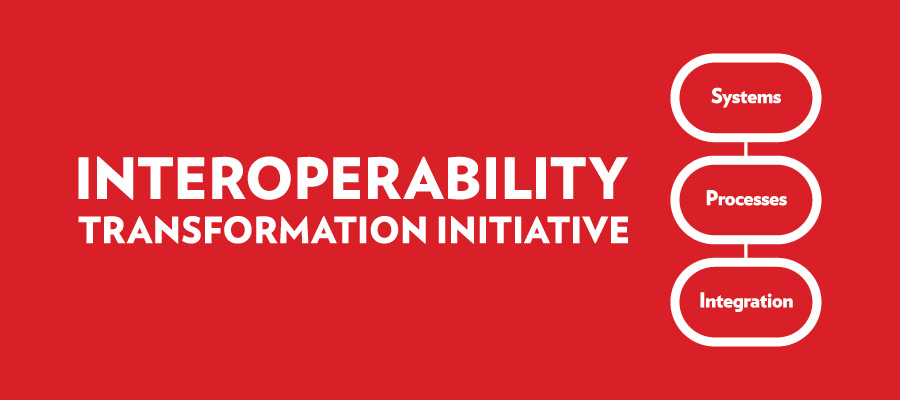Intensive collaboration, planning, and preparation that kicked into high gear in the fall of 2019 have brought the Interoperability Initiative to a stage where the rubber hits the road. The Interoperability Initiative team recently released its first of many new services to come, a new Integration Platform to improve UW–Madison’s system integration capabilities.
An Integration Platform enables faster and easier data integration between systems and applications, including both cloud and on-premises products and services. Examples of use cases include but are not limited to:
- Syncing data from a database to a third-party cloud service on a nightly basis
- Processing changes from an application programming interface (API) in real-time to update an on-premises system
- Extracting data from a third-party cloud service to populate a reporting database
With this release of UW–Madison’s new Integration Platform service powered by Informatica Intelligent Cloud Services (IICS), the Division of Information Technology (DoIT) can onboard new users to IICS to meet these needs and beyond. Several partners across the university are already putting the service to good use.
Success Stories From Early Adopters
The UW–Madison Online Undergraduate Degree Program used the Integration Platform to move student and academic plan data from the Curricular and Academic Operational Data Store (CAOS) into their Salesforce Constituent Relationship Management (CRM) instance. This was a critical piece in helping the program access and utilize existing information to build a solution to achieve its goals. You can read more about the UW–Madison Online effort in this feature: High-Touch, High-Tech: How UW–Madison Online Is Using a CRM to Support Learners.
The Office of Data Management & Analytics Services (ODMAS) is currently building a new data warehouse, Badger Analytics, and they are utilizing the Integration Platform service to integrate software as a service (SaaS) and on-premises source systems with Badger Analytics (Snowflake) and InfoAccess (Oracle on-premise database).
“We could directly read 48 data tables from our database and upload onto Snowflake,” said Rao Kunche of the ODMAS Extract Transform Load (ETL) team. “The load process was dramatically shortened by removing a lot of extra processes and space consumption on Linux servers. We have been wishing this process could happen for the last couple of years.”
Cleaner Data For Emergency Communications
In consultation with the UW–Madison Police Department (UWPD), the DoIT Enterprise Integration team used the Integration Platform to update integrations from campus data sources like Student Information System (SIS) and Human Resource System (HRS) into the WiscAlerts system. In addition to various deduplication and formatting functions, the new integration also keeps a record of bad data, like invalid emails and phone numbers.
This allows a technical team to troubleshoot issues if a user inquires about not receiving alerts either via text or email. The result of this new integration is a cleaner data source that helps ensure that important emergency communications from UWPD are sent to and received by the intended audiences.
Can We Help Your Team or Service?
In addition to having a wide array of potential implementations across the university, the Integration Platform can also cater to a diverse group of end-users. From those who may have very little integration experience to those who have advanced development and integration skills. To help users understand and get started with IICS, the Integration Platform team has compiled a set of documentation describing processes, patterns, tutorials, and examples.
Please visit the Integration Platform service page or contact us at doit-integration-platform@office365.wisc.edu for more information and/or assistance in determining whether the Integration Platform service MVP would be a fit for your team or service.
